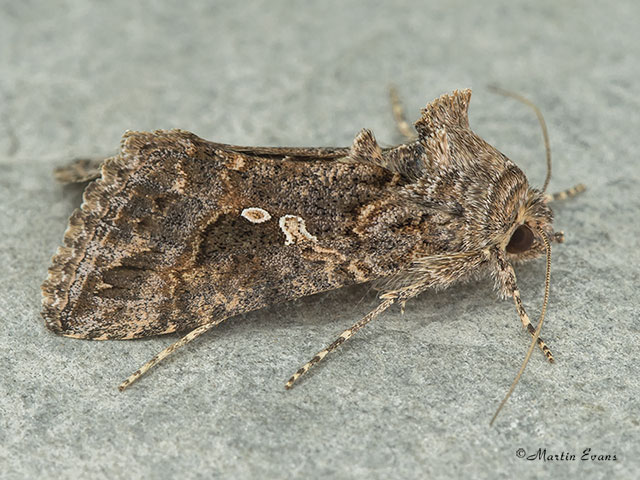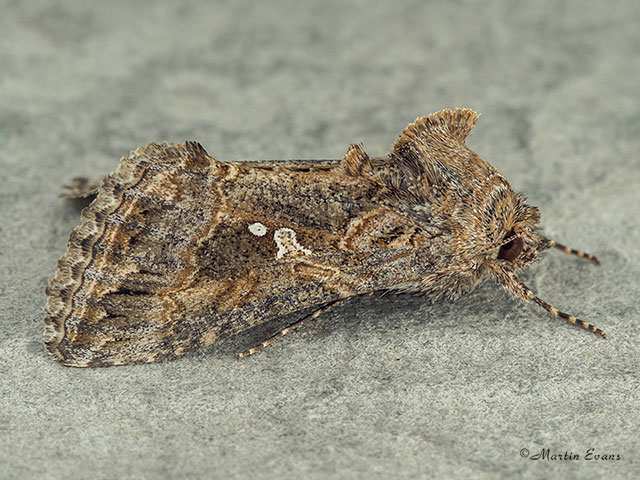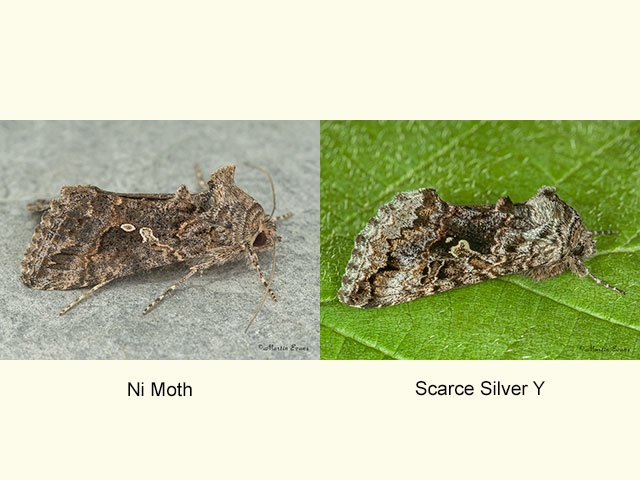Noctuidae
73.003 Ni Moth Trichoplusia ni (Hübner, [1803])
Immigrant
Similar species: Scar Bank Gem Ctenoplusia limbirena has a tear drop shaped marking about half way along the outer edge of the forewing that varies in colour from pink or orange to violet. Silver Y Autographa gamma has a more evenly shaped "Y" in the centre of the forewing, rather than one that is often separated into two parts and has a loop on the inner side of the "V" part. Scarce Silver Y Syngrapha interrogationis has mainly black and white markings rather than brown-grey and has the outer part of the central silver marking as a small spot or circle rather than a diamond shape or long outward pointing oval.
Forewing: 15 to 17mm
Habitats: In Britain it has bred in coastal situations. On mainland Europe it inhabits arid scrub and grasslands.
Habits: The moth is known in the Americas as the Cabbage Looper. It comes to light.
Foodplant: The larva feeds mainly on Crucifers as well as many other families of plants. It is known to feed on over 160 different species. In Britain the larva has been recorded on Sea-rocket, marigolds and hawk-weed flowers and on Tomato in greenhouses. In captivity it accepts Cabbage, Lettuce and Common Nettle. It pupates under a flimsy web on the underside of a leaf.
In America it has also been recorded feeding on clovers, Canadian Goldenrod, Curled Dock, Fat-hen, other goosefoots, wild lettuce, Chrysanthemum, Hollyhock, Snapdragon, Sweetpea, Broccoli, Cabbage, Cauliflower, Chinese Cabbage, Collards, Kale, Mustard, Garden Radish, Rutabaga, Turnip, Watercress, Beet, Cantaloupe, Celery, Cucumber, Lima bean, Cultivated Lettuce, Parsnip, Garden Peas, peppers, Potato, Green Bean, Spinach, Squash, Sweet Potato, Tomato, Watermelon, Cotton and Tobacco.




